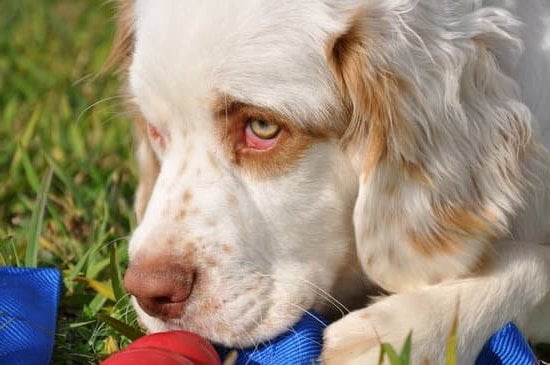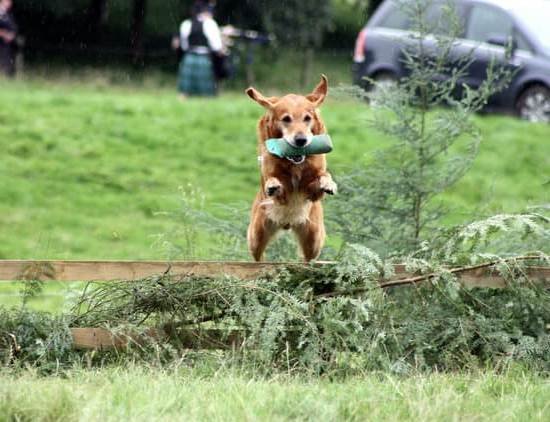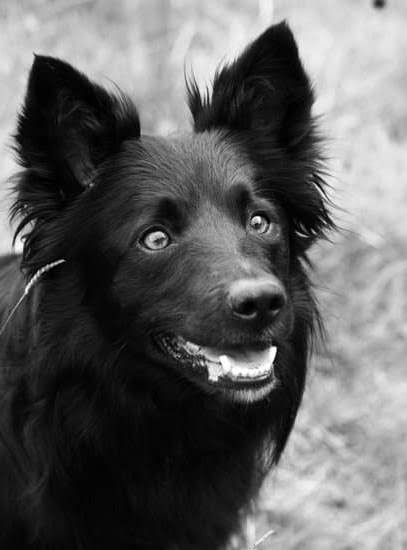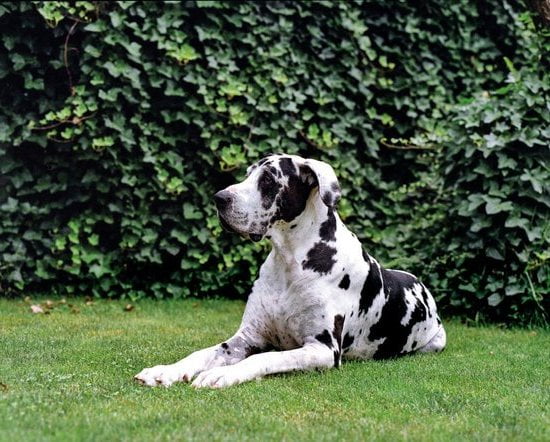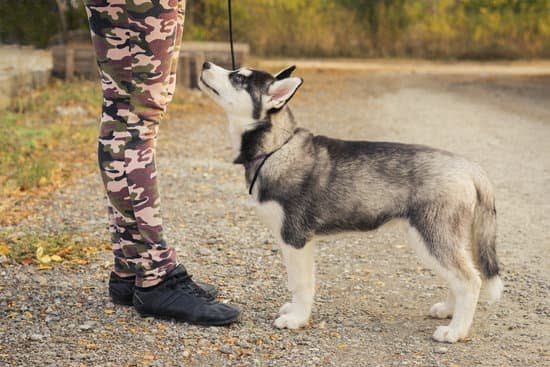As pet owners, nothing is more frustrating than coming home to find that our perfectly house trained dog has had an accident indoors. We often find ourselves questioning why a dog who is well-trained and knows where to go suddenly decides to pee inside the house. This article will delve into the mystery behind why a house trained dog pees, exploring both physical and behavioral factors that can contribute to this behavior.
House training is an essential aspect of owning a dog, ensuring that they understand where it is appropriate to relieve themselves. It involves teaching them to associate certain areas or cues with going outside, rather than within the confines of your home. Understanding the basics of dog training and the importance of consistency and positive reinforcement are crucial in preventing accidents.
While we may assume that only puppies have accidents indoors, even adult dogs can experience urinary mishaps despite being correctly house trained. One contributing factor to consider is the anatomy of a dog’s bladder. Just like humans, their bladders have limitations in terms of holding capacity, prompting them to relieve themselves more frequently than we might think.
In addition to physical factors, behavioral causes can also lead to accidental peeing in previously house trained dogs. Common triggers such as anxiety, stress, and environmental changes can disrupt their routine and impact their ability to hold their bladder properly. By understanding these underlying factors, you can work towards addressing them and restoring a leak-free home environment for you and your furry friend.
In the following sections of this article, we will explore various aspects related to why house trained dogs may pee indoors. We will examine medical conditions that can affect their urinary habits, age-related factors that come into play as they grow older, as well as how emotional factors such as anxiety and stress influence their toileting behavior.
Furthermore, we will provide practical tips and solutions for overcoming these challenges and achieving a leaky-free home with your beloved house trained dog.
The Importance of House Training
House training is one of the most important aspects of owning a dog. It not only helps keep our homes clean and odor-free, but it also promotes a healthy and happy relationship between humans and their canine companions. In this section, we will delve deeper into the importance of house training and explain the basics of dog training.
House training refers to teaching dogs to eliminate their waste in an appropriate place, usually outside or in a designated area indoors. This involves teaching them to recognize when they need to go and how to communicate their needs to their owners. By establishing clear rules and expectations, both the dog and owner can coexist harmoniously.
One of the key benefits of house training is preventing accidents inside the house. Dogs have a natural instinct to keep their living areas clean, so with proper training, they can learn to hold their bladder or bowels until they are taken outside. House trained dogs are less likely to urinate or defecate in inappropriate places such as carpets, furniture, or floors.
To effectively house train a dog, it is essential to establish a routine that includes regular potty breaks throughout the day. This helps dogs develop good bathroom habits and also ensures that they have ample opportunities to relieve themselves outside. Additionally, positive reinforcement techniques such as praise, treats, and rewards can be used to reinforce desired behaviors and encourage dogs in their training journey.
By investing time and effort into proper house training, pet owners can create a comfortable and hygienic environment for both themselves and their furry friends. With consistency, patience, and understanding, any dog can become well-trained when it comes to bathroom habits.
| Benefits of House Training | Effective Techniques |
|---|---|
| – Prevention of accidents inside the house | – Establishing a routine with regular potty breaks |
| – Maintenance of a clean and odor-free home | – Using positive reinforcement and rewards |
| – Strengthening the bond between dog and owner | – Consistency, patience, and understanding |
The Anatomy of a Dog’s Bladder
The bladder plays a crucial role in a dog’s urinary habits, and understanding its anatomy can shed light on why house trained dogs may still have accidents indoors. The bladder is a flexible organ located in the lower abdomen that stores urine. It is made up of several layers of muscle that contract and relax to control urination.
Bladder Size
One physical factor that can contribute to a house trained dog peeing indoors is the size of their bladder. Smaller breeds typically have smaller bladders, which means they have less holding capacity and may need to urinate more frequently. This can make it challenging for them to hold their urine for extended periods, especially if they are not given enough opportunities to relieve themselves.
Bladder Infections
Another physical factor that can affect house trained dogs is the presence of bladder infections or urinary tract infections (UTIs). These infections can cause discomfort and urgency, making it difficult for dogs to hold their urine until they are outside.
Signs of a bladder infection include frequent urination, straining while urinating, blood in urine, and accidents indoors despite being house trained. If you suspect your dog has a bladder infection, it is important to consult with a veterinarian for proper diagnosis and treatment.
Incontinence
Some dogs may also experience urinary incontinence, which is the involuntary loss of urine. This condition can be caused by weakened muscles around the sphincter that controls the flow of urine from the bladder.
Incontinence can be more common in senior dogs but can also occur in younger dogs due to underlying health issues or certain medications. It is important to rule out medical causes and consult with a veterinarian if you suspect your house trained dog is experiencing urinary incontinence.
By understanding the physical factors that can affect house trained dogs’ urinary habits, pet owners can better address any issues that may arise. Providing frequent potty breaks, ensuring a clean and healthy environment, and seeking veterinary care when necessary are crucial steps in maintaining a leak-free home with a house trained dog.
Behavioral Causes
House trained dogs are generally expected to understand where and when to relieve themselves. However, there are instances when even the most well-trained dogs may have accidents indoors. This can be frustrating for owners, but it’s important to remember that there are various behavioral causes that can lead to this unwanted behavior.
One common trigger for accidental peeing in house trained dogs is marking behavior. Marking is a natural instinct for dogs, especially males, as they use urine to communicate and establish territory. Even if your dog is fully potty trained, they may still engage in marking behavior if they feel the need to assert their dominance or mark their territory due to the presence of other animals or certain scents. This can result in indoor accidents despite their house training.
Another behavioral cause of accidental peeing is submissive urination. Some dogs display this behavior when they feel anxious, intimidated, or overwhelmed. Submissive urination often occurs when someone approaches them with an authoritative posture or loud voice. Dogs who engage in submissive urination may involuntarily release small amounts of urine as a way to appease the perceived threat. It’s important for owners not to punish or scold their dog for submissive urination, as it could worsen the problem.
Excitement-induced urination is yet another common trigger for accidental peeing in house trained dogs. This usually happens when a dog becomes overly excited or thrilled, such as during greetings or playtime. The excitement overwhelms their ability to control their bladder muscles temporarily, resulting in involuntary urination. While this behavior tends to be more common among puppies and younger dogs, it can also affect adult and older canines.
To address these behavioral causes of accidental peeing in house trained dogs, it’s essential for pet owners to understand the underlying triggers and tailor their training approach accordingly. By providing consistent positive reinforcement, using appropriate deterrents for marking behavior, and creating a calm and stress-free environment, owners can help their dogs overcome these issues and maintain a leak-free home.
Medical Conditions
While house training is an essential part of owning a dog, sometimes accidents happen even with a well-trained pup. In some cases, these accidents may be due to underlying medical conditions that can affect a dog’s ability to control their bladder. Understanding these health issues can help pet owners identify potential causes and seek the appropriate treatment for their furry friends.
- Urinary Tract Infections (UTIs): One common medical condition that can lead to involuntary peeing in house trained dogs is a urinary tract infection. UTIs occur when bacteria enter the urinary tract and infect the bladder, resulting in discomfort and increased urge to urinate.
Common signs include frequent urination, straining while peeing, blood in urine, and accidents despite being house trained. If you suspect your dog has a UTI, it is important to consult with your veterinarian who can perform tests and provide the necessary treatment, including antibiotics. - Bladder Stones: Bladder stones are another potential health issue that can cause a dog to pee indoors despite being house trained. These stones are hard mineral deposits that form in the bladder and can lead to blockages or irritation of the bladder lining.
Dogs with bladder stones may experience pain while urinating, frequent urination, blood in urine, or difficulty fully emptying their bladder. Treatment options for bladder stones vary depending on the size and location of the stones but may include surgery or dietary changes under veterinary guidance. - Hormonal Imbalances: Certain hormonal imbalances can also contribute to accidental peeing in house trained dogs. For instance, conditions such as Cushing’s disease or diabetes mellitus can affect a dog’s ability to hold their urine properly due to increased thirst or excessive production of urine.
It is crucial for pet owners to monitor their dog’s water intake and bathroom habits if they suspect a hormonal imbalance may be the underlying cause of their dog’s accidents. Consultation with a veterinarian and appropriate diagnostic tests can help identify these conditions and guide in developing an effective treatment plan.
Identifying and addressing underlying medical conditions is crucial in ensuring the urinary health of house trained dogs. Regular veterinary check-ups, open communication with your veterinarian, and prompt action when noticing changes in your dog’s bathroom habits will help keep your furry friend healthy and accident-free.
Age-related Factors
As our beloved furry friends age, they may experience changes in their urinary habits. Just like humans, dogs can also face age-related factors that affect their ability to control their bladder. Understanding the impact of aging on house trained dogs’ urinary habits is crucial for pet owners to provide appropriate care and make necessary adjustments to accommodate their senior companions.
One of the main age-related factors that can affect a house trained dog’s urinary habits is decreased muscle tone in the bladder. As dogs get older, the muscles in their bladder may weaken, making it harder for them to hold urine for extended periods of time. This can result in accidents inside the house, even if the dog has been successfully trained before.
Additionally, as dogs age, they may also experience various medical conditions that can contribute to changes in their urinary habits. For example, urinary tract infections (UTIs) are more common in older dogs and can cause frequent urination or difficulty holding urine. Other conditions such as bladder stones or prostate issues can also lead to changes in urination patterns.
It’s important for pet owners to monitor their aging dogs closely and be aware of any signs of discomfort or changes in urinary behavior. Consulting with a veterinarian is crucial to determine whether these changes are due to age-related factors or underlying health issues. With proper care and attention, pet owners can help their senior dogs maintain good urinary health and minimize accidents in the house.
| Aging Factors | Impact on Urinary Habits |
|---|---|
| Decreased muscle tone | Difficulty holding urine for extended periods of time |
| Increased risk of medical conditions | Possible changes in urination patterns |
Anxiety and Stress
Anxiety and stress can have a significant impact on a house trained dog’s urinary habits, leading to accidents indoors. Just like humans, dogs can experience emotions that can affect their behavior and bodily functions. When dogs feel anxious or stressed, they may lose control over their bladder and urinate in inappropriate places, even if they were previously house trained.
There are several emotional factors that can trigger anxiety and stress in dogs, resulting in indoor peeing. One common cause is separation anxiety, which occurs when dogs become distressed when separated from their owners. This anxiety can manifest through excessive whining, barking, destructive behavior, and even urination.
Another source of stress for dogs is unfamiliar environments or changes in their surroundings. Moving to a new home or having renovations done can disrupt their routine and make them feel uneasy. Similarly, introducing new pets or family members into the household can be stressful for some dogs. These changes may lead to a temporary loss of bladder control as they adapt to the new situation.
To help address anxiety and stress-related peeing in house trained dogs, there are several strategies pet owners can implement:
- Create a safe space: Set up a designated area where your dog feels secure and comfortable. Provide them with a cozy bed or crate filled with familiar toys and blankets.
- Gradual exposure: If your dog is anxious about specific situations or experiences, gradually expose them to these triggers in small doses to help desensitize them over time.
- Consistent routine: Dogs thrive on routine. Establishing a consistent schedule for feeding, exercise, playtime, and bathroom breaks can help reduce anxiety levels.
- Behavior modification techniques: Consult with a professional dog trainer or behaviorist who can guide you on positive reinforcement training techniques to address anxiety-related issues.
- Consider alternative therapies: In some cases, alternative therapies such as canine massage therapy or aromatherapy may help alleviate anxiety symptoms in dogs.
By understanding the role of anxiety and stress in a house trained dog’s peeing habits, pet owners can take proactive steps to manage these emotional factors. With patience, consistency, and a supportive environment, it is possible to help dogs overcome their anxiety and maintain proper bladder control in the home.
Environmental Changes
When it comes to house trained dogs suddenly peeing indoors, one often overlooked factor is the impact of environmental changes on their behavior. Dogs are sensitive creatures that rely heavily on routine and familiarity, so any alteration in their surroundings can throw them off balance and lead to accidents. This section will explore how adapting to new surroundings can affect house trained dogs and provide insights into managing this challenge.
One common scenario where environmental changes can trigger accidents is when a dog moves to a new home. The unfamiliar sights, sounds, and smells can create anxiety and stress, causing the dog to lose control of their bladder. Additionally, the layout of the new home may differ from what they are used to, making it difficult for them to navigate and find appropriate spots for elimination.
Another situation where environmental changes come into play is when a dog is staying in an unfamiliar location such as a friend’s house or a boarding facility. Being in an unfamiliar setting without their usual routines and comforts can be disorienting for dogs, leading to accidents despite being house trained.
To address these challenges, it is important for pet owners to help their dogs acclimate to new surroundings gradually. Prioritize creating a designated area for elimination that remains consistent across different environments. Utilizing scent cues like bringing along familiar bedding or using synthetic pheromone sprays can also provide comfort and reassurance for the dog.
Furthermore, maintaining a predictable daily routine during transitional periods can alleviate stress for the dog. Consistent feeding times, exercise schedules, and bathroom breaks help establish a sense of stability amidst changing environments.
While environmental changes may present temporary setbacks in house training progress, with patience, understanding, and appropriate management strategies, pet owners can help their dogs adjust smoothly and prevent accidents in new surroundings.
| Environmental Changes: | Adapting to New Surroundings and Their Effect on House Trained Dogs |
|---|---|
| Common Scenarios: | – Moving to a new home
|
| Challenges Faced: | – Anxiety and stress caused by unfamiliarity
|
| Strategies for Management: | – Gradual acclimation to new surroundings
|
Training Challenges
House training a dog is not always an easy task, and there are several challenges that pet owners may encounter along the way. Overcoming these hurdles is crucial in order to achieve success in the house training process and ensure a leak-free home. Understanding the common training challenges and learning effective strategies to address them can make all the difference in creating a well-behaved and house trained dog.
Consistency is Key
One of the biggest challenges in house training dogs is maintaining consistency. Dogs thrive on routine and structure, so it’s important to establish a consistent schedule for feeding, bathroom breaks, and playtime.
Inconsistent routines can confuse your dog and make it difficult for them to understand when they are expected to go potty outside. Pet owners should establish a daily routine that includes regular potty breaks, rewarding their dog for going outside, and using positive reinforcement consistently throughout the training process.
Potty Training Regression
Another challenge that pet owners may face during the house training process is potty training regression. This occurs when a previously house trained dog starts having accidents indoors again. Potty training regression can happen due to various reasons such as changes in routine, stress, illness, or even boredom.
It’s important not to get discouraged during this phase and instead focus on retraining your dog using positive reinforcement techniques. Consistently taking your dog outside at regular intervals, rewarding them for going potty outside, and closely monitoring their behavior indoors can help overcome potty training regression.
Addressing Fear and Anxiety
Fear and anxiety can also pose challenges during the house training process. Some dogs may feel anxious about going potty outdoors due to past negative experiences or fear of unfamiliar surroundings. It’s important to approach these concerns with patience and understanding.
Gradually exposing your dog to different environments and using positive reinforcement can help them overcome their fears. Additionally, providing a safe and comfortable environment for your dog at home can help reduce anxiety and improve their overall well-being.
Overcoming the challenges in house training requires dedication, patience, and understanding. By addressing consistency, potty training regression, fear and anxiety, pet owners can navigate through the obstacles that may arise during the training process. Remember that each dog is unique, so it’s important to tailor the training approach to suit their individual needs. With perseverance and effective strategies, pet owners can successfully overcome these hurdles and achieve a leak-free home with a well-trained dog.
Practical Tips and Solutions
Consistency and Routine
One of the most effective methods to prevent accidental peeing in house trained dogs is to establish a consistent routine. Dogs thrive on routine, so maintaining a regular schedule for feeding, exercise, and bathroom breaks can help minimize accidents.
Take your dog outside to their designated bathroom area at specific times throughout the day, such as first thing in the morning, after meals, before bed, and after periods of prolonged rest. By consistently reinforcing this routine, you can help your dog develop a reliable urinary habit.
Proper Positive Reinforcement
Positive reinforcement is key in preventing accidental peeing in house trained dogs. When your dog successfully eliminates in their designated bathroom area, reward them with praise, treats, or playtime. This positive association will motivate your dog to continue using the appropriate spot for urination. Conversely, avoid punishment or scolding when accidents occur as this can create confusion and anxiety for your pet. Instead, focus on reinforcing good behavior and providing opportunities for success.
Crate Training
Crate training can be a valuable tool in preventing accidental peeing in house trained dogs when utilized correctly. Dogs naturally have an instinctual desire not to soil their sleeping areas.
By crate training your dog and gradually increasing the amount of time they spend in the crate while you are away or unable to supervise them closely, you can limit their access to other parts of the house where accidents may occur. Remember to provide appropriate breaks for your dog’s age and breed as well as plenty of mental stimulation and physical exercise outside of crate time.
By implementing these practical tips and solutions into your house training routine, you can create an environment that supports successful urinary habits for your dog. Consistency and routine, proper positive reinforcement, and crate training are all effective methods that can help prevent accidental peeing in house trained dogs. With patience and dedication from the owner, you can help your dog maintain a leak-free home and enjoy a harmonious relationship with your furry companion.
Conclusion
In conclusion, understanding the reasons why a house trained dog may pee indoors is essential for pet owners to maintain a leaky-free home. By recognizing the various factors that can contribute to this behavior, owners can empower themselves with the knowledge and tools to address and resolve the issue.
Firstly, it is important to note that proper house training is crucial in preventing accidents. Dog owners should invest time and patience in teaching their pets appropriate bathroom habits. Consistency, positive reinforcement, and clear communication are key components of successful house training.
Additionally, it is vital to consider the physical aspects that may affect a dog’s urinary habits. The anatomy of a dog’s bladder plays a significant role in their ability to hold urine for extended periods. Understanding this physiology allows owners to cater their training and scheduling accordingly.
Furthermore, behavioral causes such as anxiety, stress, or environmental changes can also lead to accidents. Pet owners should create a calm and stable environment for their dogs and provide them with proper outlets for mental and physical stimulation. Additionally, gradually introducing dogs to new surroundings can help them adapt more easily.
Lastly, if all other factors have been ruled out, it may be necessary to explore potential underlying medical conditions. Regular veterinary check-ups are important for identifying any urinary health issues that may cause accidental peeing in house trained dogs.
By addressing these various factors and implementing practical tips and solutions outlined throughout this article, pet owners can overcome the challenges in the house training process and achieve a leaky-free home with their house trained dogs. With patience, dedication, and a clear understanding of their pets’ needs, owners can ensure both their own happiness and that of their furry companions.

Welcome to the blog! I am a professional dog trainer and have been working with dogs for many years. In this blog, I will be discussing various topics related to dog training, including tips, tricks, and advice. I hope you find this information helpful and informative. Thanks for reading!

